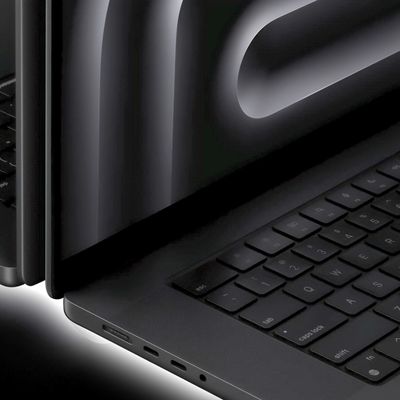Kuo: iPad Air to Adopt OLED in 2022, Mini-LED to Remain Exclusive to iPad Pro Models
Apple will transition the iPad Air to OLED displays in the second half of next year, while mini-LED display technology will remain exclusive to upcoming higher-end iPad Pro models, according to a new report from Apple analyst Ming-Chi Kuo.

Apple is expected to be just weeks away from launching a mini-LED iPad Pro, the first Apple device to feature the newer technology. In Kuo's latest investor note, seen by MacRumors, the analyst underlines his belief that even when the iPad Air transitions to an OLED display in 2022, mini-LED will remain in its tablet lineup as a display technology exclusive to iPad Pro models.
The market is worried that if the iPad starts to use OLED in 2022, Apple will abandon the mini LED. However, according to our latest industry survey, if the iPad adopts an OLED display in 2022, it will be the mid-/low-end iPad Air, while the high-end iPad Pro will still use a mini LED display. The adoption of OLED in iPad does not affect the positive trend of mini LED. Since the OLED used in iPad is a rigid type and has a significantly lower PPI than iPhone, it is less challenging to produce, and the cost is close to the LCD currently used in iPad Air.
Kuo envisions a future iPad lineup in which OLED and mini-LED further differentiate Apple's mid-to-low end iPad Air models from its iPad Pro devices. Apple currently uses OLED displays in the Apple Watch and the iPhone, while Macs and iPad still retain the older LCD technology. OLED displays offer higher brightness, deeper blacks, and wider viewing angles. However, they often cost significantly more to produce than LCDs.
Earlier this month, DigiTimes reported that a 10.9-inch iPad, presumably the iPad Air, will be updated with an OLED display in early 2022. In contrast to Kuo's note, DigiTimes stated that Apple would also adopt OLED technology for the 12.9-inch iPad Pro. DigiTimes has also claimed that Apple might release 16-inch and 17-inch MacBook Pro with OLED later on next year.
Apple is already working on several products with mini-LED displays, including redesigned MacBook Pros. Kuo believes that Apple's use of mini-LED will accelerate in the coming years as production costs decrease, with Apple's mid-to-high-end devices consistently adopting the technology first.
Popular Stories
Apple will adopt the same rear chassis manufacturing process for the iPhone SE 4 that it is using for the upcoming standard iPhone 16, claims a new rumor coming out of China. According to the Weibo-based leaker "Fixed Focus Digital," the backplate manufacturing process for the iPhone SE 4 is "exactly the same" as the standard model in Apple's upcoming iPhone 16 lineup, which is expected to...
Apple typically releases its new iPhone series around mid-September, which means we are about two months out from the launch of the iPhone 16. Like the iPhone 15 series, this year's lineup is expected to stick with four models – iPhone 16, iPhone 16 Plus, iPhone 16 Pro, and iPhone 16 Pro Max – although there are plenty of design differences and new features to take into account. To bring ...
Israel-based mobile forensics company Cellebrite is unable to unlock iPhones running iOS 17.4 or later, according to leaked documents verified by 404 Media. The documents provide a rare glimpse into the capabilities of the company's mobile forensics tools and highlight the ongoing security improvements in Apple's latest devices. The leaked "Cellebrite iOS Support Matrix" obtained by 404 Media...
If you have an old Apple Watch and you're not sure what to do with it, a new product called TinyPod might be the answer. Priced at $79, the TinyPod is a silicone case with a built-in scroll wheel that houses the Apple Watch chassis. When an Apple Watch is placed inside the TinyPod, the click wheel on the case is able to be used to scroll through the Apple Watch interface. The feature works...
A widespread system failure is currently affecting numerous Windows devices globally, causing critical boot failures across various industries, including banks, rail networks, airlines, retailers, broadcasters, healthcare, and many more sectors. The issue, manifesting as a Blue Screen of Death (BSOD), is preventing computers from starting up properly and forcing them into continuous recovery...
Apple in 2025 will take on a new compact camera module (CCM) supplier for future MacBook models powered by its next-generation M5 chip, according to Apple analyst Ming-Chi Kuo. Writing in his latest investor note on unny-opticals-2025-business-momentum-to-benefit-509819818c2a">Medium, Kuo said Apple will turn to Sunny Optical for the CCM in its M5 MacBooks. The Chinese optical lens company...





















